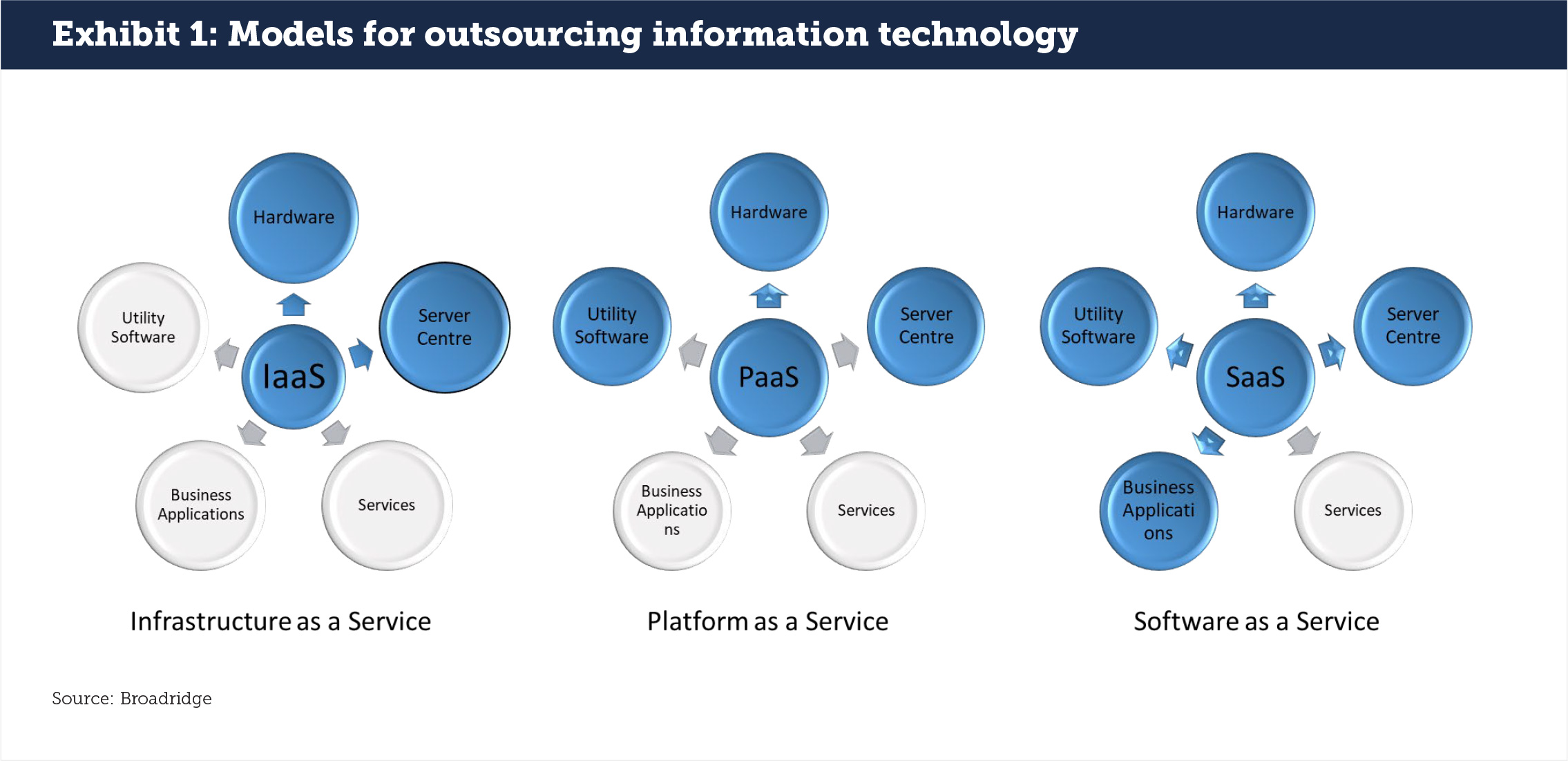It is seldom remembered today that one of the pioneers of business computing was J. Lyons and Co., whose main business was running a nationwide chain of teahouses, as well as being a leading supplier of tea and baked goods. Lyons funded the creation of one of the first practical business computers – the Lyons Electronic Office (LEO), which came on-line in 1951 and started with calculations of the sale of bakery products. Gradually, LEO took on more tasks for Lyons including payroll and inventory management. In 1954 Lyons decided to draw a clearer line between cake makers and computer scientists, and established a separate subsidiary called LEO Computers Ltd.
One of Lyons’ many innovations in computing was the realisation that their payroll processing was fundamentally the same as the payroll process of other firms. Why would a firm buy a computer and payroll software if Lyons could run the process for them? In 1956 they took over the processing of payroll for the Ford Motor Corporation (UK). A guest post from Broadridge.
A great deal of tea and crumpets have been consumed since then but many of the fundamental criteria for making choices about the management of computer systems remain the same even though circumstances have changed considerably since the 1950s.
From the late 1980s until the great financial crisis there was a period of intense financial and technical innovation in the capital markets. During that time one of the great debates that raged in IT departments was “buy versus build” – whether it was better to buy packaged software from vendors or build software internally. Today that battle has abated as capital markets technology has matured. Buying packaged software has become the norm in any business area where there is a high degree of commonality in functionality required. Other areas of information technology in the financial sector, such as running server centres, have become so commoditised that few banks operate the server centres where their systems reside.
Today there is continuum of models:
- IaaS (Infrastructure as a Service): a third party is responsible for running hardware and generally the building in which it is located;
- PaaS (Platform as a Service): a third party also manages/provides key software such as operating systems, web servers and relational database management systems; and
- SaaS (Software as a Service), a third party manages the whole system stack for a business application from the software itself through to the underlying operating systems, hardware and the facility where the hardware sits.
The optimal choice can be made using objective criteria related to economics and required service levels, from simply outsourcing hardware and where it’s housed to outsourcing virtually everything (see Exhibit 1).

What is the optimal model for securities finance trading systems?
Securities Finance is a sector of capital markets subject to many events since the global financial crisis, which have pushed it towards greater of standardisation of products, processes and infrastructure. The regulatory challenges in terms of capital treatment, leverage and yield enhancement structures have seen a renewed focus on the basic service functions of securities finance desks. Initiatives to encourage greater use of industry utilities and mechanisms, such as central clearing and triparty management of collateral, have further pushed standardisation. More recently, discussions on creating a Common Domain Model for financial products (which standardises the representation of products and events) have extended from derivatives to securities finance.
Furthermore, it is clearly the case that standardised securities operations, with the ‘right kit and partner’, need to be in place to outsource and automate most business so that trading, ops, collateral management, settlements, compliance, reporting, analytics and MIS are optimised, just as Ford realised when he became a pioneer of SaaS by using Lyon’s service. In our case, the clincher may be everyone’s favourite topic, and one hard to avoid: regulation. Between now and early 2021 both the Securities Financing – Transactions Regulation (SFTR) and Central Securities Depositories Regulation (CSDR) will go live across virtually all market participants, and are certain to push the drive to standardisation much harder and faster as firms try to avoid drowning in a flood of trade breaks, partial settlements and increased manual overhead, compounded by patching of old platforms built and installed in a previous era. For those of you lucky enough to already be on the most automated SaaS SecFin platforms the integration cost for such changes – due to benefits of hosted software delivery – is virtually zero.
Even if only because of the current regulatory challenges, increased standardisation is an important reason for firms in the securities finance industry to use packaged software rather than building their own systems, but is it enough to decide whether to go for a hosted SaaS solution? A good answer requires considerations related to economics and service levels.
The last decade has seen relentless pressures to reduce the costs of running securities finance desks. Both front office and operations have emerged slimmed down and more efficient. In most firms this has been matched by significant reductions in the size of the IT teams supporting the business. In some cases, specialised securities finance IT teams have effectively disappeared as they were merged into broader units. While smaller IT teams have done an amazing job in maintaining service levels, crisis conditions can easily overwhelm internal resources. It also makes it hard to find the resources to deal with sudden increases in demand, whether from regulatory challenges or from revenue generating opportunities.
It is also prescient to consider that we are living through a rare period of unprecedented Business Continuity Planning (BCP) for the entire financial community. One of the critical benefits of SaaS is the dedication of the provider in already considering this aspect of their service, so that the service provider’s SaaS infrastructure copes with factor-of-scale increases in trade processing volumes or a move to 100% remote working protocols with no loss of service. Simply put, the SaaS provider focuses on this, whilst you focus on your business. Lyons and Ford would, in the present day, have continued processing their payroll automatically with zero downtime whilst less fortunate peers would have struggled with the BCP challenge, manually and with days of downtime, because it’s simply not a well-tested focus and just ‘part of the service’.
In circumstances like this it is worth considering what benefits can be obtained from the SaaS model:
- Relying on the vendor to take over the core management allows a firm’s limited internal IT resources to concentrate on the work that creates genuine competitive advantage in the market
- Vendors, particularly well-established vendors, generally have a far greater depth of expert resource that allows firms to lean on them when there are surges in demand for either support or the creation of new functionality
- The more mature vendors have processes and technical tools in system support that at least match the standards required internally by banks and other large financial institutions
- Managing the support of a system shared across multiple clients can have obvious economies of scale that can help drive down the total cost of ownership of a system
- Reviewing BCP success during periods of unprecedented volatility and change
So, if you have been finding life unusually difficult recently ask yourself these questions:
- Is the way I am do business converging with market standards?
- Have I gone through a prolonged period of cost reductions?
- Has my internal IT team contracted?
- Do I need the capability to focus my internal IT resources on critical projects when needed?
- Would I benefit from the security of having a large expert team supporting my system?
- Do I need to find additional cost savings without reducing service levels?
- Are there audit points that remain unresolved because of a lack of IT budget or sufficient internal staff with the right specialist skills?
- Is my BCP plan and, more importantly, my ability to execute it strong and practiced?
Sadly, the modern generation of vendors no longer combine their businesses with the provision of tea and crumpets, but if the answer to most of those questions is yes, now is probably a good time to consider moving to a SaaS solution for your securities finance technology needs. A well-designed SaaS solution does not mean just solving immediate problems at the expense of innovation. The best SaaS solutions in securities finance technology are designed to be flexible and extendable enough to make it also still possible to build out functionality that integrates with the SaaS solution either using in-house resource or in cooperation with a vendor. Can you really afford not to consider the SaaS option for your securities finance technology solution?
About the Author
 Martin Walker is the Head of Product Management for Broadridge’s Securities Finance and Collateral Management division. Former roles include Global Head of Securities Finance and Treasury IT at Dresdner Kleinwort and Global Head of Prime Brokerage Technology at RBS Markets. He has also worked as a consultant and researcher in capital markets with several papers published. He contributed to the new book, Evidence-Based Management – How to Use Evidence to Make Better Organizational Decisions, and his first book on Capital Markets infrastructure will be published later in the year. He has an MSc in Computing Science from Imperial College, London and a BSc in Economics from the London School of Economics. He is also a fellow of the Centre for Evidence-based Management.
Martin Walker is the Head of Product Management for Broadridge’s Securities Finance and Collateral Management division. Former roles include Global Head of Securities Finance and Treasury IT at Dresdner Kleinwort and Global Head of Prime Brokerage Technology at RBS Markets. He has also worked as a consultant and researcher in capital markets with several papers published. He contributed to the new book, Evidence-Based Management – How to Use Evidence to Make Better Organizational Decisions, and his first book on Capital Markets infrastructure will be published later in the year. He has an MSc in Computing Science from Imperial College, London and a BSc in Economics from the London School of Economics. He is also a fellow of the Centre for Evidence-based Management.


